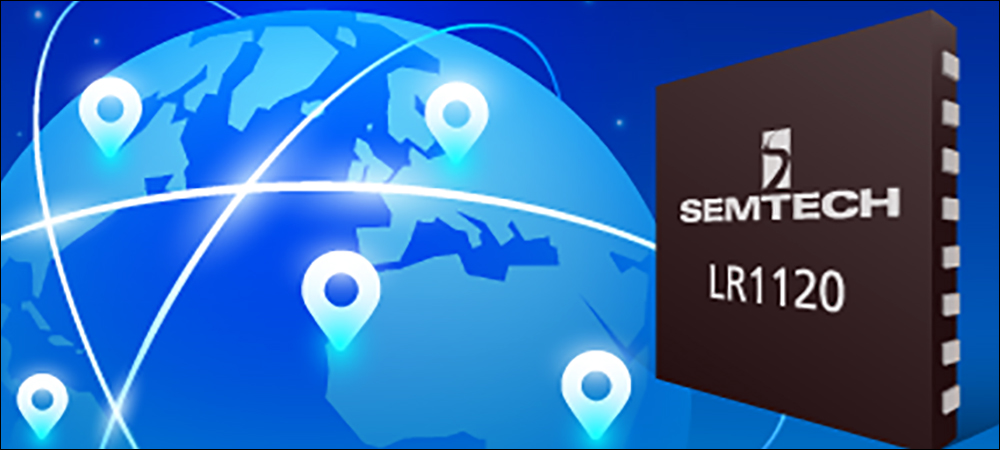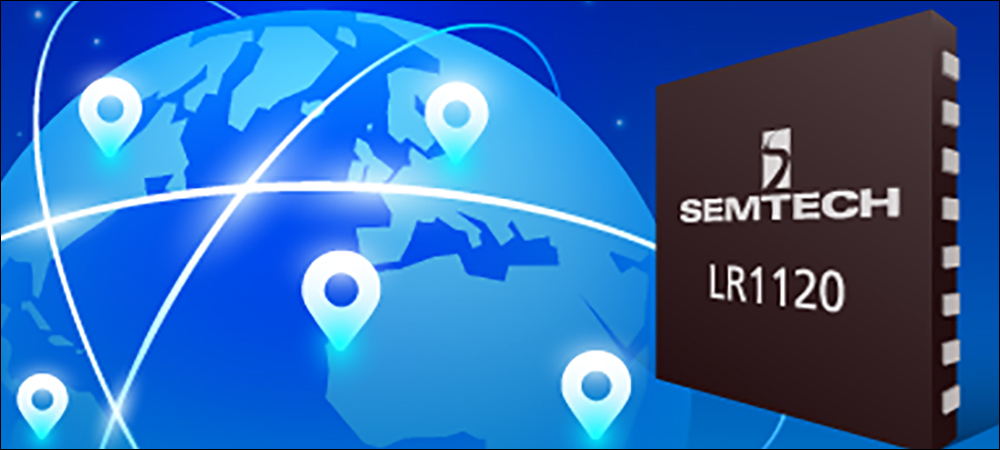- Global Connectivity with 2.4 GHz and Satellite
- Maintaining Low Battery Use with Cloud Computation
- New Devices and Solutions for Geolocation
- Development Underway
Universal and global connectivity for sensors and tags has been an ongoing challenge for standard Internet of Things (IoT) technologies. Solutions that work well in one part of the world are often un-useable for another. That means that while IoT technologies are increasingly bringing visibility to things and conditions from all over the globe, national and local bandwidth availability and restrictions are limiting some deployments.
Sensor device makers are attempting to address this problem with Semtech‘s recently released IC product known as LoRa Edge LR1120, which provides multiband connectivity in devices that incorporate it. The purpose, according to the company, is to manage the movement, location or condition of goods and assets worldwide, including at sea or on different continents. The technology may be deployed in the coming months or years for international shipments, as well as at remote sites, such as in mines, at oil and gas facilities, or on farms.

The LoRa Edge LR1120
The LoRa Edge LR1120 comes with a long-range LoRa radio that can communicate over the sub-GHz and 2.4 GHz bands, as well as S-band for satellite connectivity. It features a Wi-Fi MAC address scanner and cloud-native, multi-constellation, and global navigation satellite system (GNSS) access, all of which leverage Semtech’s LoRa Cloud services platform. This is the latest offering in the company’s LoRa Edge product family, and it expands on the features of the LoRa Edge LR1110, released in 2021. The latter offers functionality across LoRa bands and features low battery consumption.
The LoRa Edge LR1120 includes 2.4 GHz transmission for connectivity anywhere worldwide, the company says, without users having to change networks and bands. It works with low-Earth orbit (S-band) satellites so data can be collected at sea or at remote locations where no LoRa or 2.4 GHz infrastructure is available. According to Semtech, this latest device is all about international movement of goods, and access at very remote locations. For users, the solution is intended to eliminate the need to reconfigure a device every time they enter a new area, without requiring them to pay local networks, and allowing them to access remote location data.
Global Connectivity with 2.4 GHz and Satellite

Marc Pégulu
The LoRa Edge LR1120 retains many key features of its predecessor, Semtech reports, including the same amount of battery life. The company makes semiconductors and algorithms for infrastructure, as well as high-end consumer and industrial equipment for high-performance analog and mixed-signals, according to Marc Pégulu, the VP and general manager of Semtech’s Wireless and Sensing Products Group.
After the LoRa Edge LR1110 was released, solution providers and device manufacturers began building technology using the IC to provide location data at low energy with data management at the edge. Now, Pégulu says, the LoRa Edge LR1120 is designed to extend the lower edge platform for global use. The addition of 2.4 GHz and S-band satellite provides not only flexibility, he notes, but also cost savings, since users could bypass local networks to access data.
While the S-band encompasses the 2.4 GHz band, there is a licensed portion within the S-band, between 1.9 and 2.2 GHz. Some global companies in the industry have purchased part of the spectrum in which the LoRa Edge LR1120 accommodates, so the devices can transmit via low-Earth orbit or medium-orbit satellites if needed.
Maintaining Low Battery Use with Cloud Computation
Low battery consumption is enabled by the computation engine residing in Semtech’s edge-based lower cloud. Power consumption is reduced based on data processing, by an order of magnitude on the device. Thus, the company explains, the sensor is 10 times lower in power than similar such products,
Challenges for companies that track items via IoT sensors are twofold, Pégulu explains: a lack of flexibility and a lack of range. Different frequency requirements globally affect flexibility. In North America, LoRa operates in the 915 MHz band, while in Europe it uses 868 MHz. China utilizes 870 MHz, while Australia and New Zealand operate at 915 MHz. A device that works in the European Union or the United States thus would not be able to transmit at the same frequency in Japan.
As such, when companies relying on IoT data enter a new country, they typically must use a device with regulatory approval for that specific frequency. On the other hand, 2.4 GHz is the frequency for Wi-Fi, as well as for Bluetooth Low Energy (BLE), and a device would not need to be reprogrammed based on that global band. Moreover, satellite availability enables sensors to transmit in remote areas.
New Devices and Solutions for Geolocation
If a company were transporting goods from China to Europe and then to the U.S. West Coast, for example—over the Pacific Ocean and on a shipping container—connectivity would have empty spaces. Users could identify when a container had left a port in China, and then when it arrived at Long Beach, but they might necessarily be able to monitor its activity in between.
Device manufacturers could increase the cost of a device if it had multiple regional parameters programmed into it, but they would still need to get regulatory certifications for each region, then reprogram the device when it entered that new jurisdiction. The LoRa Edge LR1120 device, however, can automatically switch to the appropriate band—or to 2.4 GHz or satellite communications, both of which operate around the world.
By employing a frequency other than LoRa, users can transmit at a higher data rate when needed. The devices being built with the LoRa Edge LR1120 are not just intended for international shipping, the company notes. Some will be used for remote condition monitoring in hard-to-reach places, such as deserts, offshore oil rigs or agriculture sites. For example, the system could leverage satellites once or twice daily, whenever they are available, to capture updates regarding conditions at a mine or drill site.
Development Underway
Companies that collaborate with Semtech have customers using the LoRa Edge LR1110 predecessor product for such use cases as cattle tracking, so that they can understand where grazing animals are located in their pasture. The latest product will make it easier to access data over a choice of satellite or other frequencies. Another use case is bicycle tracking in urban areas. Trackers attached to bikes could use the LoRa Edge LR1120 to trace a bike reported lost or stolen, while eliminating pockets of missing coverage.
Several companies are currently making devices with the LoRa Edge LR1120 product in mind, Pégulu says. “We have customers actively developing for this new product,” he states, including satellite company Lacuna. “They can then just turn around and offer this as a service to logistics companies or freight forwarders, or even brands.” It will now be possible for data to be captured internationally in ways that weren’t possible before, Pégulu adds.
Semtech’s goal is to collaborate with satellite companies and solution providers, and to provide an upgraded product for its existing customers. In the latter case, Pégulu says, “They can either upgrade existing trackers to acquire new capabilities or launch brand-new products that can tackle today’s international supply chain logistics problem.” Upgrades in existing devices will be straightforward, the company indicates, with a “pin-for-pin compatible chipset,” meaning the new IC can be simply dropped into a device and be swapped out for the previous version.
Key Takeaways:
- The multi-channel functionality of Semtech’s LoRa Edge LR1120 IC is being built into products used to track transoceanic assets, conditions, individuals, things and livestock in remote areas.
- The device is aimed at adding flexibility to leverage satellite or 2.4 GHz bands where local LoRa requirements or connectivity challenges necessitate an alternative.


